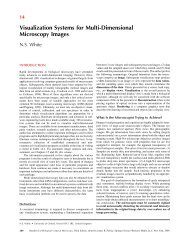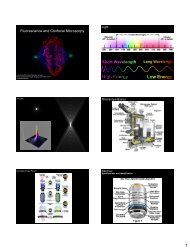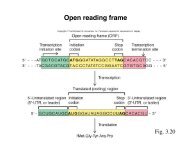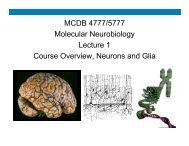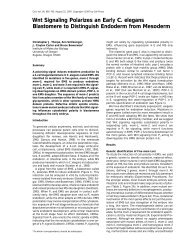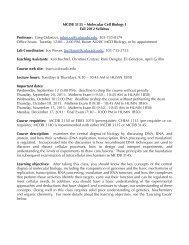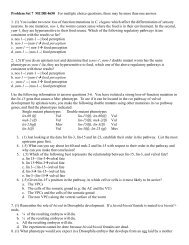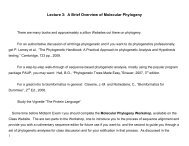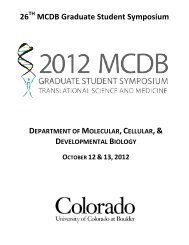Lecture 2: Describing Microbial Diversity: the ... - MCD Biology
Lecture 2: Describing Microbial Diversity: the ... - MCD Biology
Lecture 2: Describing Microbial Diversity: the ... - MCD Biology
You also want an ePaper? Increase the reach of your titles
YUMPU automatically turns print PDFs into web optimized ePapers that Google loves.
12<br />
B. The best way is by direct comparison of sequences of nucleic acids or proteins. This provides “precise”<br />
numbers for defining relationships between molecules -- and, ideally, organisms.<br />
6. For “orthologous” (of common ancestry and function) nucleic acid (or protein) sequences:<br />
A. Consider:<br />
--Organism X • • • AGCUGCCAGU • • •<br />
X XX<br />
--Organism Y • • • AACCCCCAGU • • •<br />
"DNA OR RNA?<br />
Sequence X is 70% identical to Sequence Y,<br />
Fractional identity is 0.7<br />
Fractional difference is 0.3 (1-0.7)<br />
1) Note <strong>the</strong> terms: “homologous” = of common ancestry; “orthologous” = of common ancestry and function.<br />
2) Note that <strong>the</strong> term “homology” is commonly used incorrectly when “identity” is meant. Note that<br />
nucleotide sequences are not “##% similar”, <strong>the</strong>y are “##% identical”; protein seqs, on <strong>the</strong> o<strong>the</strong>r hand, can<br />
be “similar”. (How is that?)





